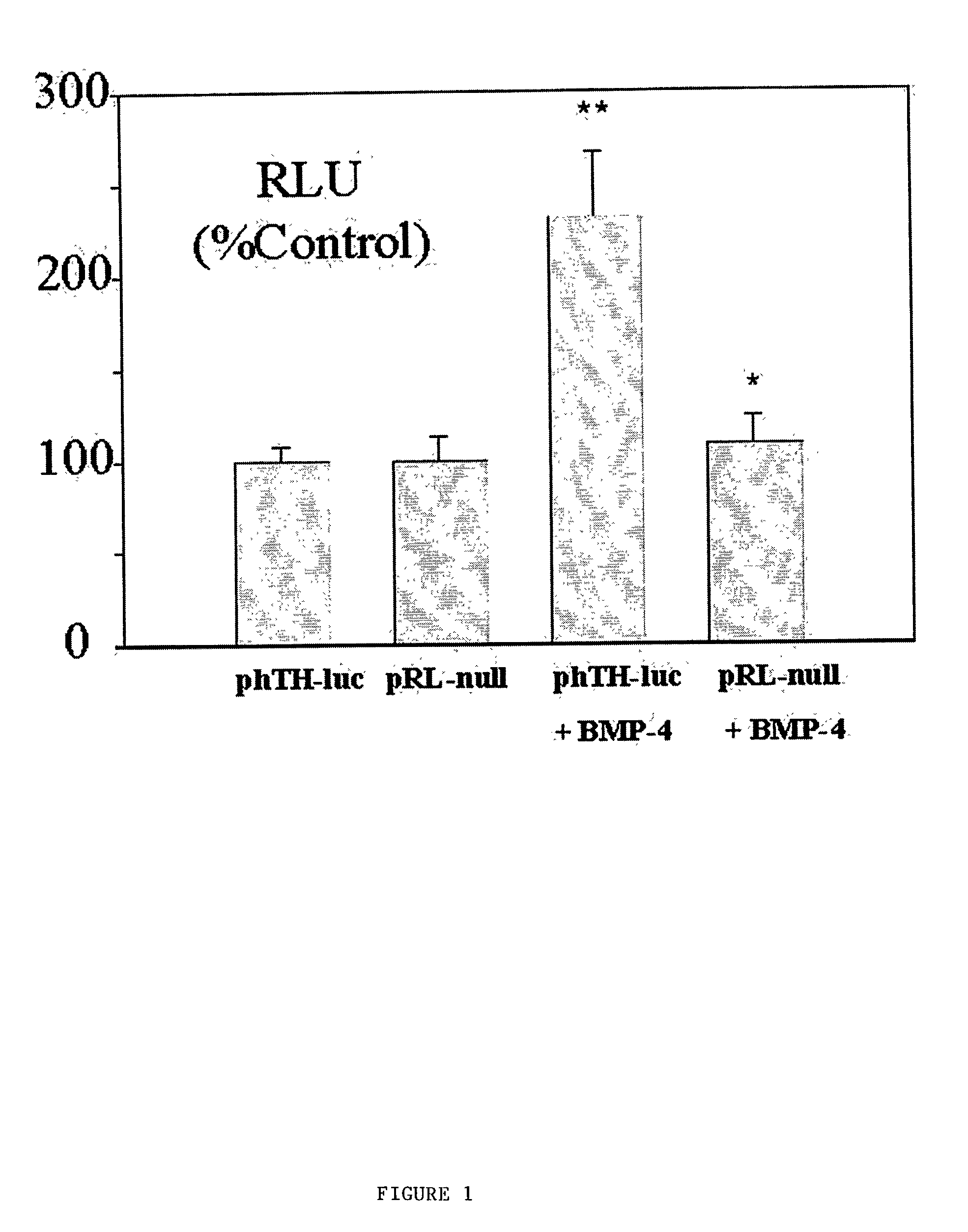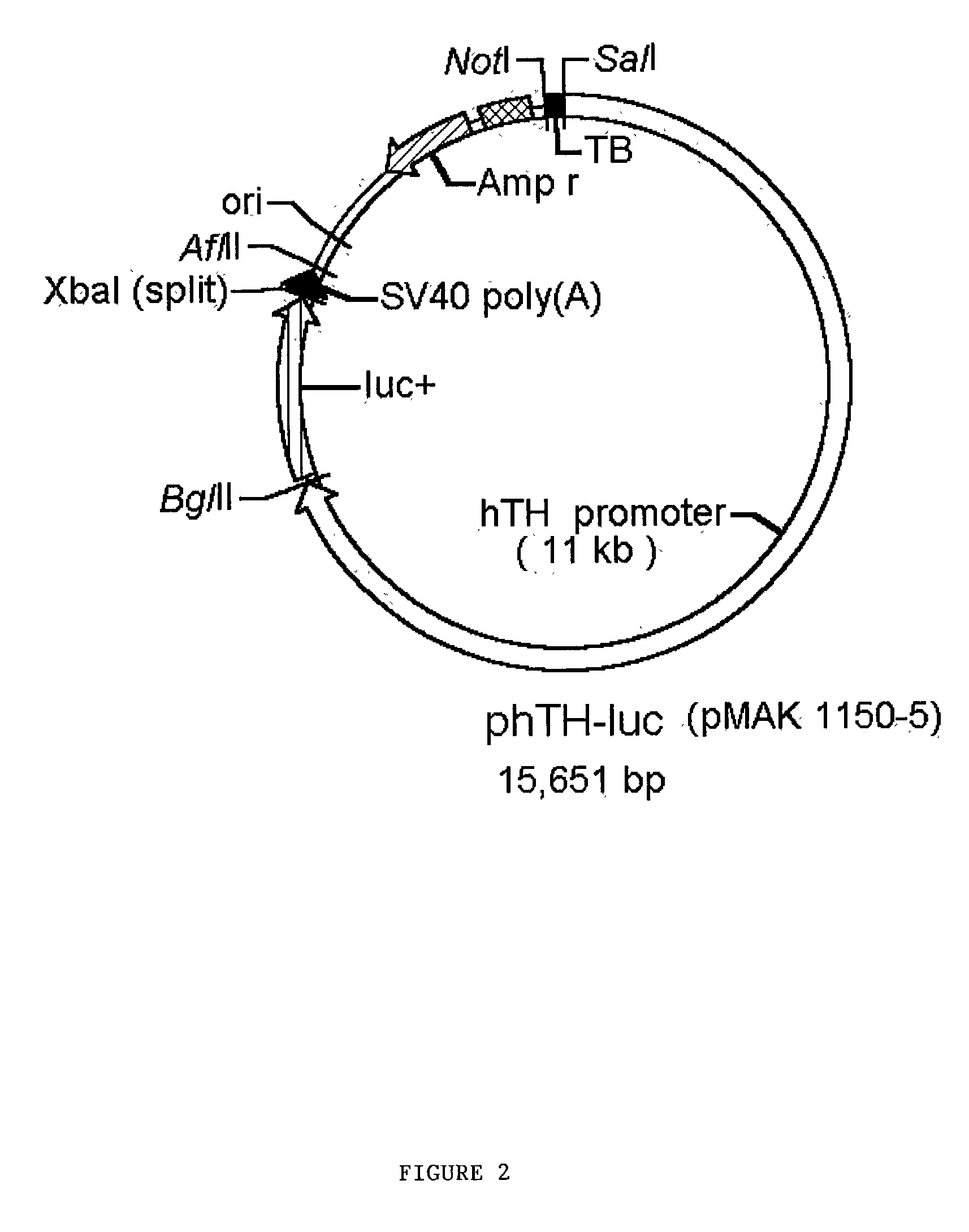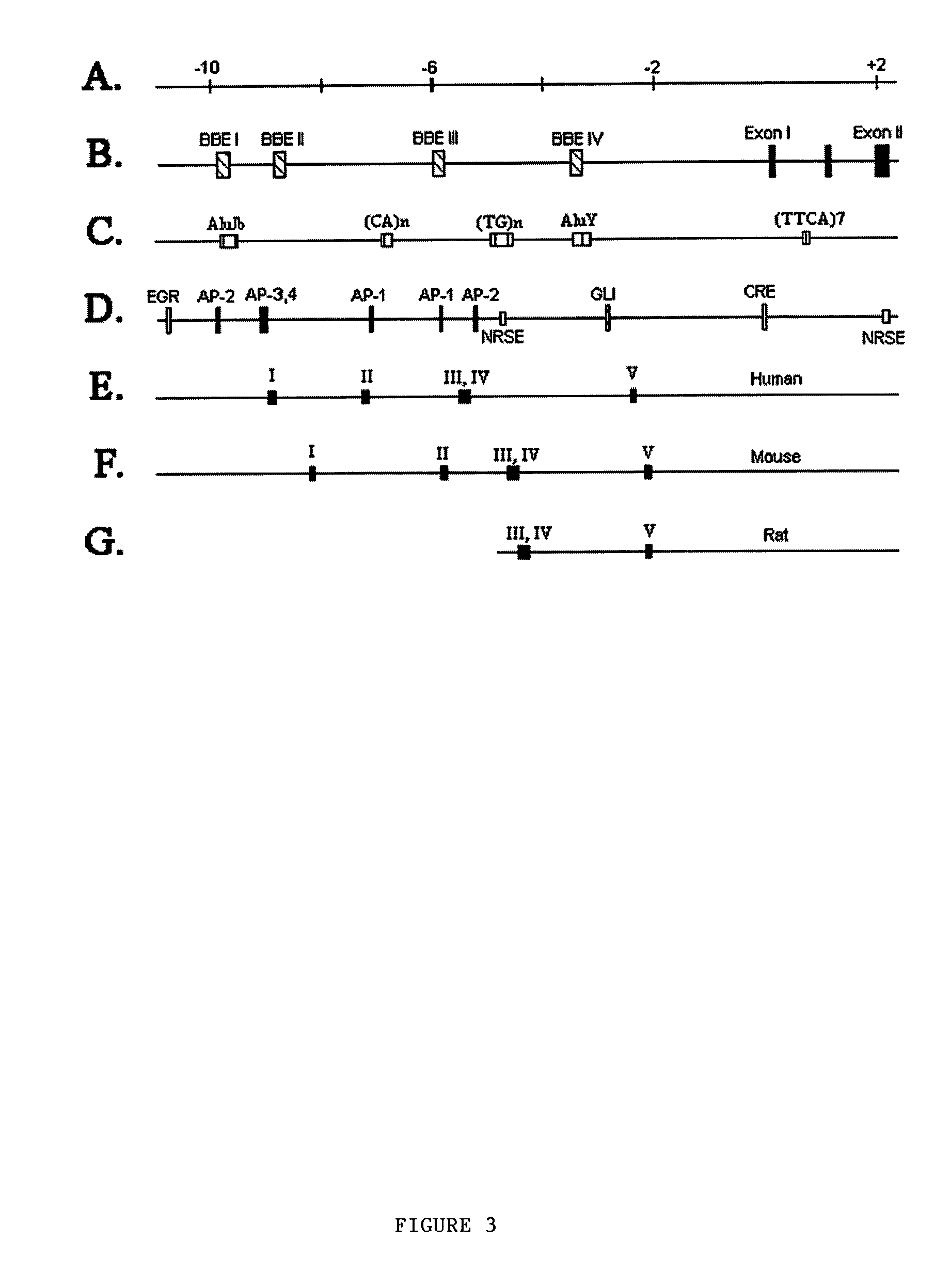Human tyrosine hydroxylase promoter and uses thereof
- Summary
- Abstract
- Description
- Claims
- Application Information
AI Technical Summary
Problems solved by technology
Method used
Image
Examples
Embodiment Construction
[0118] Molecular Cloning of the Human Tyrosine Hydroxylase Promoter.
[0119] A partial human tyrosine hydroxylase (hTH) cDNA was purchased from ATCC (ATCC 100604). An EcoRI-Xho I fragment of this cDNA was isolated and used to screen a commercially available lambda cDNA library purchased from Stratagene (catalog no. 936201). The longest hTH cDNA clone of 2 million total plaques screened was isolated and the 5' 350 bp extending from an internal Xho I site to an Eco RI site within the vector was purified for use as a hybridization probe. We screened 3 million plaques of a lambda human genomic library purchased from BIO 101. Of seven positive clones recovered by cre / lox mediated excision in plamid pBSKS+ two contained identical (by restriction mapping) .about.15 kb inserts encompassing exons 1,2, and 3 of the hTH gene and 11 kb of 5' flanking (promoter) region as determined by Southern blot analysis.
[0120] The proximal 516 bp of the hTH promoter has been previously reported.sup.46. To seq...
PUM
| Property | Measurement | Unit |
|---|---|---|
| Therapeutic | aaaaa | aaaaa |
| Nucleic acid sequence | aaaaa | aaaaa |
| Fluorescence | aaaaa | aaaaa |
Abstract
Description
Claims
Application Information
 Login to View More
Login to View More - R&D
- Intellectual Property
- Life Sciences
- Materials
- Tech Scout
- Unparalleled Data Quality
- Higher Quality Content
- 60% Fewer Hallucinations
Browse by: Latest US Patents, China's latest patents, Technical Efficacy Thesaurus, Application Domain, Technology Topic, Popular Technical Reports.
© 2025 PatSnap. All rights reserved.Legal|Privacy policy|Modern Slavery Act Transparency Statement|Sitemap|About US| Contact US: help@patsnap.com



